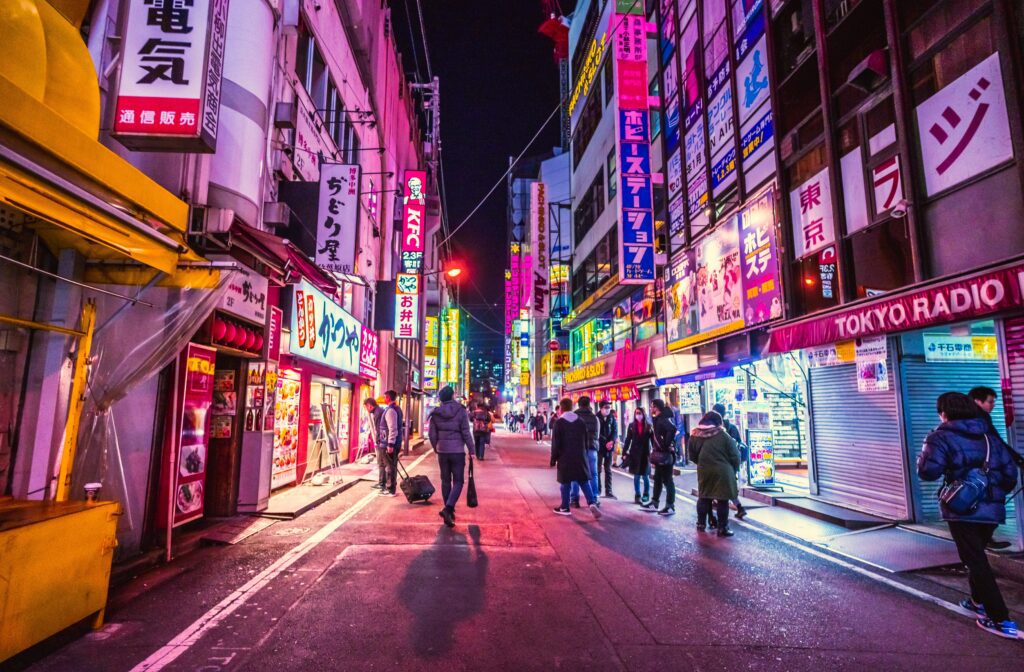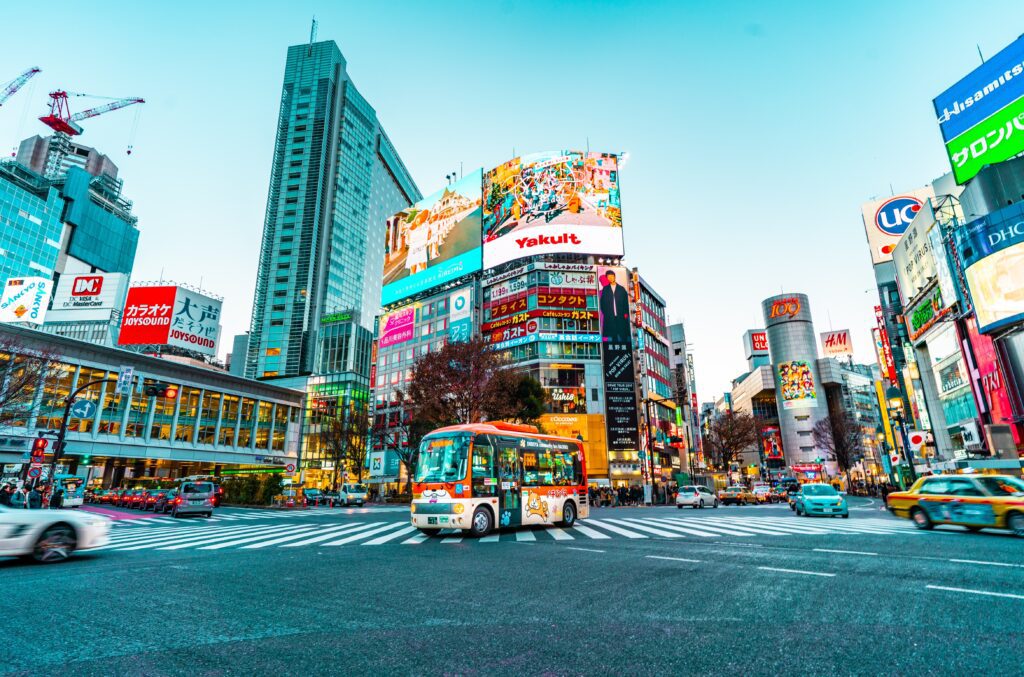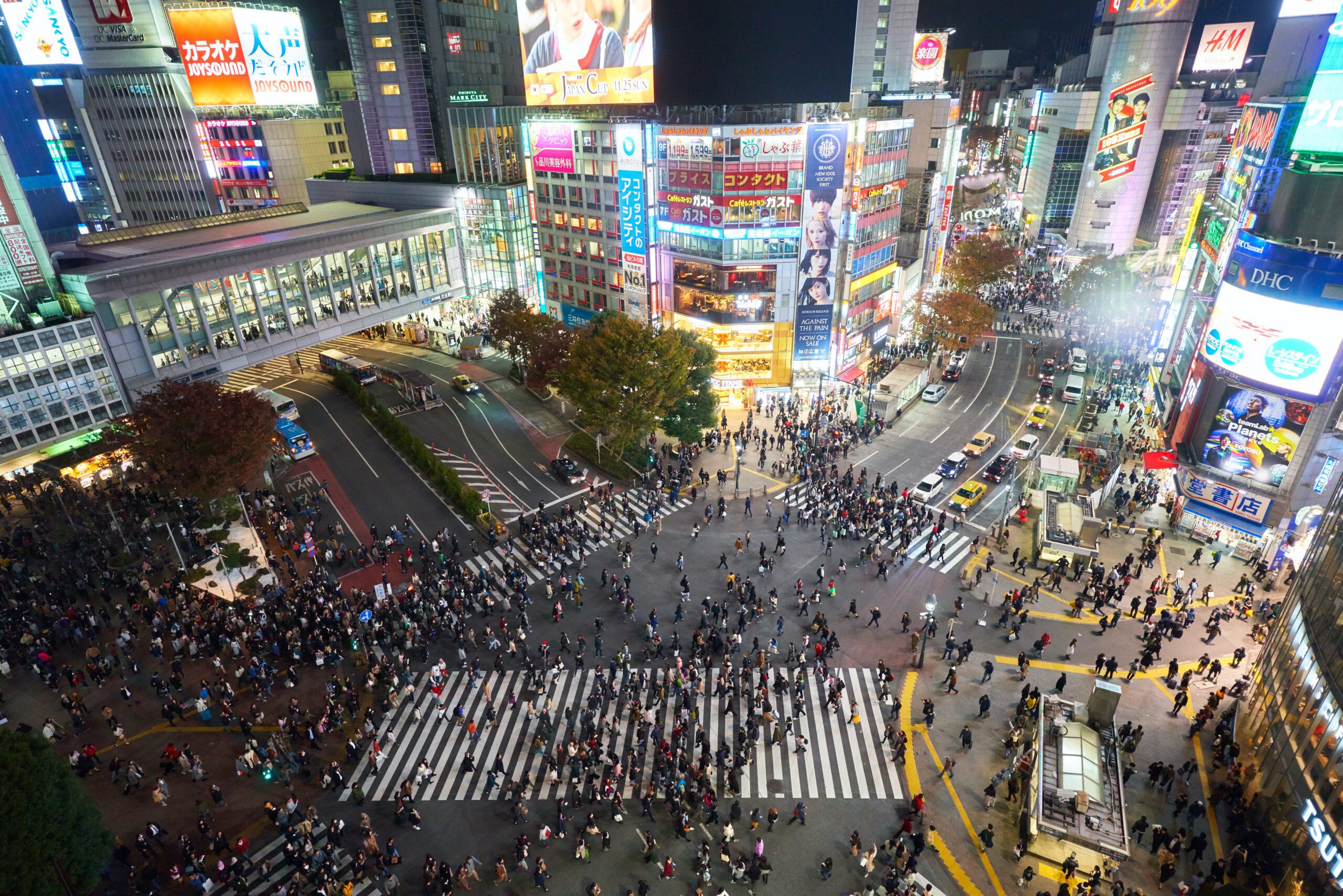Overview:
The 8 Best Places to Take Pictures in Tokyo, Tokyo combines tradition and modernity, offering diverse photography opportunities. From vibrant Shibuya to the iconic Tokyo Tower, each corner tells a unique visual story. Exploring Tokyo’s streets, studios, and Instagram spots uncovers endless possibilities. Nearby Kyoto also offers captivating moments to freeze in time. The city’s mix of traditional gardens and modern architecture showcases its rich diversity. The 8 Best Places to Take Pictures in Tokyo, Photographers can capture Tokyo’s essence through a lens, preserving its cultural depth and energy. This guide empowers photographers to capture Tokyo’s evolving spirit and charm.

Introduction:
the 8 best places to take pictures in Tokyo, Tokyo, a captivating mosaic of tradition and modernity, offers a plethora of exceptional locations for avid photographers. From the lively street scenes to the captivating landmarks, the city provides a wealth of possibilities for various genres of photography, including street, portrait, and landscape. This article delves into the 8 best places to take pictures in Tokyo, offering insights and recommendations for each spot.
Exploring Street Photography in Tokyo
Tokyo’s lively streets offer an ideal canvas for street photographers to capture the city’s essence. Among the renowned spots, Shibuya Crossing stands out for its controlled chaos, ideal for freezing the city’s vibrant energy.
Nearby Shinjuku’s Golden Gai offers an intimate view of local Tokyo life through its small bars and alleys, perfect for candid shots. On the other hand, Yanaka’s serene ambiance showcases a nostalgic side of Tokyo, ideal for capturing the city’s historical charm through traditional architecture and friendly locals.
Mention With Points:
1. Shibuya Crossing: Renowned worldwide, Shibuya Crossing is a bustling intersection, capturing the organized chaos of Tokyo’s urban life. It’s a perfect spot to showcase the city’s energy through a mass of pedestrians crossing the streets in synchrony.
2. Asakusa’s Nakamise Shopping Street: This area is a throwback to traditional Tokyo. The street, flanked by old-style shops selling souvenirs and local snacks, offers an authentic glimpse into the city’s past, providing a rich canvas for street photography.
3. Yanaka District: A quieter side of Tokyo, Yanaka boasts wooden houses, temples, and narrow streets, creating a serene atmosphere. This district exudes a nostalgic charm, perfect for capturing the historical essence of the city.
4. Shinjuku EastSide Square: Electric and vibrant, this area is filled with neon lights and bustling streets. It provides a rich tapestry of color and movement, making it an excellent location for dynamic urban photography.
Tokyo is a city full of neon lights, and if you like this twinkling glow, you can customize the same neon signs. By designing text or patterns, you can create a unique home space. If you’re a shop owner, you can also refer to this décor concept. Display custom neon signs in your windows or in-store to create a tasteful space and attract more attention.
5. Akihabara: Known for its electronics, gaming, and anime culture, Akihabara offers a unique, colorful backdrop for street photography. It’s a haven for capturing Tokyo’s contemporary pop culture and technological enthusiasm.
6. Shimokitazawa: This district is a maze of narrow streets lined with vintage shops, cafes, and street art. It provides an eclectic, bohemian atmosphere that’s ideal for capturing urban subculture and artistic expressions.

Exploring these diverse street photography locations in Tokyo offers a kaleidoscopic view of the city’s multifaceted personality, from its historical roots to its modern, buzzing energy. Each spot presents a unique opportunity to capture the essence of Tokyo’s cultural and urban vibrancy through the lens of a camera.
Unveiling Tokyo’s Photography Studios
For photographers seeking controlled environments and professional settings, Tokyo’s photography studios stand as exemplary hubs. Studios like STUDIO XYZ in Roppongi or Studio Z in Ginza boast state-of-the-art equipment and versatile backdrops, catering to various photography needs. These studios provide ample space and resources for photographers to execute their creative visions, whether it be for fashion, portrait, or product photography.
Mention With Points:
1. STUDIO XYZ in Roppongi:A professional studio with advanced facilities and diverse backdrops caters to various photography needs. It provides a controlled setting for different genres, including fashion and product photography.
2. Studio Z in Ginza: Known for its sophisticated setup and lighting equipment, this studio provides a sleek and modern setting. It’s an ideal space for capturing high-end fashion or commercial photography with its meticulously designed backgrounds.
3. Shinjuku Studio: Situated in the heart of Shinjuku, this studio offers a spacious area with configurable settings suitable for large-scale productions. It’s a favorite among photographers seeking ample space for elaborate photo shoots.
4. Harajuku Creative Studios: Reflecting the district’s artistic vibe, these studios cater to more unconventional and experimental photography. They provide an artistic backdrop for those wanting to explore unique and avant-garde concepts.
5. Shibuya Urban Studios: Embodying the fast-paced nature of Shibuya, these studios offer quick setups and modern infrastructure. They cater to photography styles requiring a contemporary urban edge, ideal for edgy fashion or street-style shoots.
6. Tech-Centric Studios in Akihabara: These specialized studios focus on tech-themed backdrops and lighting, catering to the city’s tech culture. They offer a unique setting for capturing product photography or futuristic-themed shoots.
Tokyo’s Instagram-Worthy Spots
The 8 Best Places to Take Pictures in Tokyo, In the digital era, the search for Tokyo’s Instagram spots is ongoing. Harajuku, known for its bold fashion and vibrant street art, offers a vivid backdrop for social media-worthy snaps. The teamLab Borderless in Odaiba creates surreal, visually immersive experiences perfect for Instagram shots. Nezu Museum provides a serene setting with captivating landscapes and art installations, ideal for stunning photos.
Mention With Points:
1. Harajuku: Known for its colorful and quirky fashion, Harajuku is a vibrant district that offers an eclectic and visually dynamic backdrop for Instagram photos. Takeshita Street, in particular, is famous for its fashion boutiques and vivid street art, making it a hotspot for Instagrammers seeking bold and unique visuals.
2. teamLab Borderless in Odaiba: This digital art museum creates surreal and immersive experiences, perfect for capturing otherworldly and visually captivating content. Its interactive exhibits and enchanting light displays are ideal for unique and engaging Instagram posts.
3. Nezu Museum: Nestled amidst serene gardens, the Nezu Museum offers picturesque landscapes and exquisite art installations, providing a tranquil and aesthetic setting for visually stunning Instagram shots. The museum’s traditional architecture and carefully curated outdoor spaces make for an elegant backdrop.

4. Shibuya Graffiti Wall: Located in the heart of Shibuya, this colorful graffiti wall serves as a magnet for creative Instagram shots. Artists frequently update the wall with new and vibrant artworks, making it an ever-evolving canvas for striking and artistic imagery.
5. Omotesando Hills: Known for its contemporary design and luxury shopping, Omotesando Hills provides a sophisticated and stylish setting for Instagram photos. The area’s modern architecture and chic atmosphere offer an elegant backdrop for fashion-forward and refined content.
6. Ueno Park: With its picturesque cherry blossoms during spring, Ueno Park becomes a dreamy location for Instagram-worthy photos. Beyond the cherry blossoms, the park houses museums, shrines, and ponds, offering diverse and scenic backdrops for any Instagram feed.
Tokyo is full of famous attractions and trendy neighborhoods. If you’re excited about the graffiti wall or wandering around the park, you can take a photo and customize a pin as a souvenir. Metal pins can be engraved with the names of scenic spots and places of interest. You can also wear pins on your clothes to let more people see Japanese fashion and culture.
Kyoto: A Photography Haven Near Tokyo
The 8 Best Places to Take Pictures in Tokyo, While not within Tokyo’s boundaries, Kyoto stands as a nearby gem brimming with incredible photography spots. The Fushimi Inari Taisha, famed for its striking vermilion torii gates, serves as a picturesque setting for landscape and portrait photography alike. The Arashiyama Bamboo Grove, with its towering bamboo stalks forming a mystical canopy, provides an enchanting backdrop for a diverse array of photographic compositions.
Mention With Points:
1. Fushimi Inari Taisha: Known for its iconic rows of vibrant red torii gates, this Shinto shrine provides a stunning backdrop for photography. The gates create a mesmerizing pathway through the forested hillside, offering unique compositional opportunities for both landscape and portrait photography.
2. Arashiyama Bamboo Grove: The towering bamboo stalks in this serene grove create an ethereal atmosphere, providing a captivating setting for photographers. The diffused light filtering through the thick bamboo canopy makes for enchanting and visually striking imagery.
3. Kinkaku-ji (Golden Pavilion): Adorned in gold leaf, this Zen Buddhist temple reflects off the tranquil waters of its surrounding pond, offering a picturesque and majestic scene. The temple’s ornate beauty against the surrounding greenery provides a rich canvas for landscape and architectural photography.
4. Philosopher’s Path: This stone-paved walkway, flanked by hundreds of cherry trees, offers a serene and picturesque environment, particularly during the cherry blossom season. The path’s beauty changes with the seasons, providing opportunities for capturing nature’s ever-changing palette.
5. Kiyomizu-dera Temple: Positioned on a hilltop, this historic temple offers panoramic views of Kyoto, making it an ideal spot for landscape photography. The temple’s wooden veranda and the cityscape below create a striking contrast, providing diverse photographic compositions.
6. Gion District:
Gion’s historic streets and traditional houses offer an authentic view of Kyoto’s past. Photographing geishas, cherry blossoms, and the old-world charm provides rich opportunities for cultural and street photography.
Kyoto, with its historical architecture, natural beauty, and traditional culture, offers picturesque locations for photographers. From Fushimi Inari’s torii gates to tranquil bamboo groves and historic temples, Kyoto provides diverse and captivating settings for photography enthusiasts capturing Japan’s ancient capital.
Tokyo Tower: A Photographer’s Delight
The iconic Tokyo Tower symbolizes the city’s skyline and is a magnet for photographers seeking iconic imagery. Certain vantage points, like the Zojoji Temple grounds, offer stunning shots with the tower majestically in the background. Furthermore, the observation deck at Roppongi Hills Mori Tower provides a panoramic view that’s perfect for capturing the cityscape with Tokyo Tower as its centerpiece.
Mention With Points:
1. Zojoji Temple Grounds: Offering an iconic view of Tokyo Tower, the Zojoji Temple grounds create a serene yet striking backdrop for photography. The temple’s historic architecture juxtaposed with the modern tower presents a captivating blend of old and new, perfect for artistic compositions.
2. Roppongi Hills Mori Tower Observation Deck: With its panoramic views of the city skyline, this observation deck provides an excellent vantage point for photographers. Capturing the Tokyo Tower amidst the sprawling cityscape offers a grand and breathtaking visual narrative.
3. Shiba Park: Situated near Tokyo Tower, Shiba Park offers a verdant and tranquil setting for capturing the tower. The park’s lush greenery combined with the tower’s impressive structure creates a picturesque scene for photographers seeking natural elements in their shots.
4. Tokyo City View at Mori Art Museum: This observation deck, located in Roppongi Hills, allows for diverse and creative shots of the Tokyo Tower against the urban landscape. It’s an ideal spot for capturing the tower at different angles, particularly during sunrise or sunset for striking lighting effects.
5. Sumida Park and Asakusa Culture and Tourist Information Center: Positioned across the Sumida River, this area offers an alternative perspective of the Tokyo Tower. The architectural lines of the Asakusa Culture and Tourist Information Center paired with the tower in the distance create a unique composition for photographers.
6. Hamarikyu Gardens:
Hamarikyu Gardens blend tradition with modernity, offering a picturesque backdrop for Tokyo Tower against nature and cityscapes.
Tokyo Tower symbolizes the city’s skyline and architectural brilliance, inviting photographers to explore creative vantage points for captivating shots. Each location, from traditional temple grounds to modern decks, offers a distinct perspective on the iconic tower within Tokyo’s urban landscape.

The Magnificent Gardens and Parks
Tokyo’s gardens and parks offer a serene yet visually captivating backdrop for photography. The Shinjuku Gyoen National Garden, with its blend of traditional Japanese, English, and French garden landscapes, serves as a tranquil oasis for photography enthusiasts. Similarly, Ueno Park, a diverse site hosting cherry blossoms in spring, various museums, and shrines, stands as a year-round destination for photography.
Mention With Points:
1. Shinjuku Gyoen National Garden: A harmonious blend of Japanese, English, and French garden landscapes, Shinjuku Gyoen provides a serene and picturesque backdrop. With seasonal floral displays, wide lawns, and peaceful ponds,
2. Ueno Park: Boasting a myriad of attractions, including cherry blossoms in spring, multiple museums, temples, and vast green spaces, Ueno Park offers diverse backdrops for photography.
3. Hama-rikyu Gardens: Situated alongside Tokyo’s skyscrapers, these meticulously landscaped gardens juxtapose nature with urban development.
4. Rikugien Gardens: Known for its meticulously designed landscapes and a central pond, Rikugien Gardens offer a tranquil and aesthetic environment. The carefully composed scenes throughout the garden provide a serene backdrop for nature and garden photography.
5. Koishikawa Korakuen Gardens: With its classic Japanese garden design and historic elements, this park offers captivating scenes for photography.
6. Showa Kinen Park:
Showa Kinen Park boasts diverse landscapes like flower fields and forests, offering varied natural scenery for photographers. Its changing landscapes and seasonal events present multiple photo opportunities year-round.
Tokyo’s stunning gardens and parks offer serene escapes from city life, providing diverse settings for photographers. Each spot, from traditional Japanese gardens to modern nature spaces, offers unique opportunities to capture the beauty and seasonal changes in Tokyo’s green areas.

Capturing the Essence of Tradition and Modernity
Tokyo’s unique blend of tradition and modernity provides photographers with a vast canvas of contrasting yet complementary elements. The historic Asakusa area, home to the Senso-ji Temple, offers a peek into the city’s ancient past with its bustling Nakamise Shopping Street and the majestic temple itself. On the other hand, the modern architectural wonder of the Tokyo International Forum presents sleek lines and captivating designs, offering a perfect contrast to Tokyo’s historical sites.
Mention With Points:
1. Asakusa: Home to the Senso-ji Temple and Nakamise Shopping Street, Asakusa embodies Tokyo’s historical roots. The vibrant temple grounds, traditional architecture, and bustling streets juxtaposed with modern shops create a compelling contrast, allowing photographers to capture the harmony between tradition and contemporary life.
2. Meiji Shrine and Harajuku: The Meiji Shrine, nestled in a lush forest in the heart of Harajuku, symbolizes Japan’s rich cultural heritage. The serene Shinto shrine surrounded by nature coexists with the trendy and fashion-forward district of Harajuku, offering a blend of tradition and modernity within one frame.
3. Tokyo International Forum: A masterpiece of modern architecture, the Tokyo International Forum’s sleek and futuristic design stands in stark contrast to the nearby historic districts. Photographers can capture the interaction between innovative structures and the city’s traditional elements, showcasing Tokyo’s dynamic evolution.
4. Tsukiji Outer Market and Toyosu Market: These vibrant markets exemplify Tokyo’s fusion of old and new. While Toyosu represents modernity with its advanced facilities, the historic Tsukiji Outer Market embodies tradition with its local vendors and cultural experiences. Photographers can capture the coexistence of traditional fish markets with state-of-the-art facilities.
5. Akihabara District: Known for its tech and anime culture, Akihabara is a perfect representation of Tokyo’s modern side. Capturing the neon lights, anime billboards, and futuristic gadgets juxtaposed against remnants of old Tokyo creates a visual narrative of the city’s constant blend of tradition and innovation.
6. Ginza Shopping District:
Ginza, with its luxury stores and modern architecture, reflects Tokyo’s contemporary lifestyle and a blend of tradition and modernity. The district’s sophisticated urban landscape creates ideal contrasts for photography.
Embracing the Culmination of Tokyo’s Photographic Riches:
1. Diverse Neighborhoods: Tokyo’s varied districts, from the youthful energy of Shibuya to the historic charm of Asakusa and the modern sophistication of Ginza, offer a diverse range of photographic opportunities. Each neighborhood showcases a distinct facet of Tokyo’s cultural tapestry.
2. Seasonal Delights: The city’s changing seasons offer unique photography prospects. From the iconic cherry blossoms in spring to the vibrant autumn foliage, Tokyo’s parks and gardens become picturesque backdrops, providing a tapestry of colors for photographers to capture.
3. Cultural Events and Festivals: Tokyo hosts numerous festivals and cultural events throughout the year. Events like the Sanja Matsuri in Asakusa or the Sanno Matsuri in Ueno present a visual spectacle, allowing photographers to capture traditional performances, vibrant parades, and cultural celebrations.
4. Architectural Marvels: Tokyo boasts a mix of traditional and contemporary architecture. Iconic landmarks such as the Tokyo Skytree, Tokyo Station, and modern skyscrapers offer stunning architectural photography opportunities, highlighting the city’s blend of innovation and history.
5. Food and Culinary Culture: Tokyo’s food scene is as visually enticing as it is delicious. From intricate sushi presentations to bustling street food markets like Tsukiji or the depachika (food basements) in department stores, the culinary landscape provides engaging subjects for food photography.
6. Daily Life and Street Scenes:
Tokyo’s daily life offers varied moments—from busy rush hours to peaceful park scenes—that beg to be captured. The city streets tell the story of Tokyo’s diverse population and vibrant character.
Embracing Tokyo’s photography riches means experiencing the city’s beauty and dynamism. The 8 Best Places to Take Pictures in Tokyo, From ever-changing neighborhoods to cultural events and architectural marvels, photographers find a diverse range of subjects. Tokyo’s fusion of tradition and modernity creates endless opportunities for photographers in this dynamic playground of possibilities.
Conclusion
The 8 Best Places to Take Pictures in Tokyo, Exploring these spots enables photographers to reveal Tokyo’s beauty and diversity through captivating visual stories for a global audience.
Tokyo’s photographic appeal blends tradition and innovation, turning every picture into a compelling narrative.

This comprehensive guide intends to offer insights into these locations, empowering photographers to capture and share the enchanting allure of Japan’s vibrant capital.
To visit all the photo spots, you will need several days in Tokyo. And for your stay there, you will need accommodation, which the cozycozy search engine will help you find. Whether it’s a hotel, hostel or apartment, you can find everything with cozycozy.
Read More: Family-Friendly Destinations
Frequently asked questions:
The best times for capturing iconic spots in Tokyo can vary. Sunrise and sunset often provide beautiful natural lighting and fewer crowds for these locations.
When photographing shrines or temples in Tokyo, it’s essential to be respectful. Some places may prohibit photography indoors, and signs will indicate these restrictions. Always pay attention to signs, avoid disrupting worshippers, and refrain from taking photos in sensitive areas or during ceremonies.
Many photography studios in Tokyo are open to tourists or visiting photographers. Some studios might require advance booking, especially during peak seasons, while others might welcome walk-ins. It’s advisable to check their policies and availability before visiting.
Crowds and privacy considerations can be challenges for street photographers in Tokyo. To overcome these, being discreet and respectful while capturing candid moments is crucial. Exploring less crowded areas or using longer focal lengths can offer new perspectives without disrupting the scene.
Some districts or specific locations in Tokyo might have restrictions on commercial photography or publication. It’s advisable to check the rules and regulations of each place beforehand, especially when intending to use the images for commercial purposes. Certain landmarks might require permission or have copyright restrictions for commercial use.

